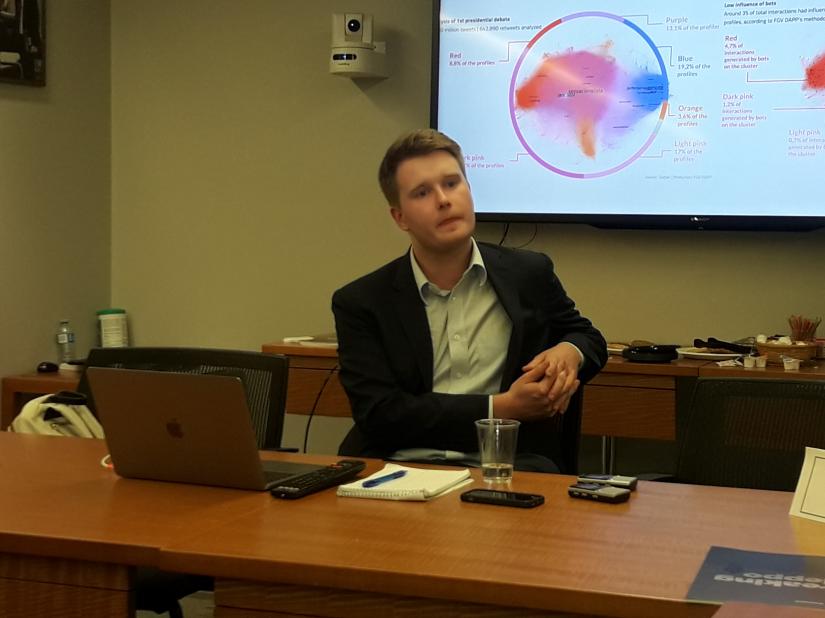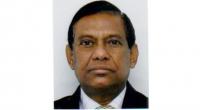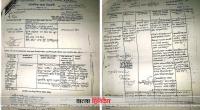 The use of fake news during the ‘safe traffic’ movement in August shook the society as false photographs and video went viral about agitating students and law enforcing agencies.
The use of fake news during the ‘safe traffic’ movement in August shook the society as false photographs and video went viral about agitating students and law enforcing agencies.
People tend to believe the fake news and disseminate it faster than the usual news.
Few months ago there was massive flooding in southwest of the United States and a post that went viral showed that sharks were swimming on Texas and Houston freeway. It was retweeted 300,000 times, but actually it is a picture of a Caribbean island taken in 2014.
In another viral video showed that Muslim refugees in Germany causing disruption and it is supposedly spread by right groups. But, Google image search showed it was incident of a football match.
In all these cases, anybody with proper knowledge and understanding can detect the fake news and stop spreading the false information, said Nicholas Yap, Assistant Director, Digital Forensics Research Lab (DFRLab) when a group of journalists met him at his office in Washington recently.
“If you know a certain post is suspicious and you know the technique to verify that, then you can stop spreading the false and fake news,” said Nicholas Yap.
The Atlantic Council’s DFRLab incepted 2016 with four people but now it has grown with 15 people. It studies disinformation by exposing falsehoods and fake news, documenting human rights abuses, and building digital resilience worldwide.
We continually track global disinformation campaigns, fake news stories, covert military developments, and subversive attempts against democracy while teaching the public skills to identify and expose attempts to pollute the information space, said Yap.
“We want to educate people and explain how we identify the fake news,” he said.
Anyone with internet connection can do what we are doing giving the right understanding, he added.
The lab uses open source information which are available in Facebook, Twitter, Instagram and social platform and applies different tools like Google Earth, Google Image and traditional news source to get the real picture.
Citing example, he said in the ‘shark case’ or ‘Germany incident’, Google image can be an effective tool to find out the origin of the pictures, he said.
So far, the Lab busted presence of Russian military in Ukraine and attack on Syrian civilians by Asad regime, he added.
 Others
Others
30756 hour(s) 16 minute(s) ago ;
Morning 07:11 ; Saturday ; Apr 20, 2024
Crusade against fake news
Send
Sheikh Shahariar Zaman
Published : 02:00, Nov 03, 2018 | Updated : 02:00, Nov 03, 2018
Published : 02:00, Nov 03, 2018 | Updated : 02:00, Nov 03, 2018
0 ...0 ...
/hb/
Topics: Top Stories
- KOICA donates medical supplies to BSMMU
- 5 more flights to take back British nationals to London
- Covid19: Rajarbagh, Mohammadpur worst affected
- Momen joins UN solidarity song over COVID-19 combat
- Covid-19: OIC to hold special meeting
- WFP begins food distribution in Cox’s Bazar
- WFP begins food distribution in Cox’s Bazar
- 290 return home to Australia
- Third charter flight for US citizens to return home
- Dhaka proposes to postpone D8 Summit
Unauthorized use of news, image, information, etc published by Bangla Tribune is punishable by copyright law. Appropriate legal steps will be taken by the management against any person or body that infringes those laws.
Bangla Tribune is one of the most revered online newspapers in Bangladesh, due to its reputation of neutral coverage and incisive analysis.
F R Tower, 8/C Panthapath, Shukrabad, Dhaka-1207 | Phone: 58151324; 58151326, Fax: 58151329 | Mob: 01730794527, 01730794528


